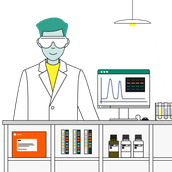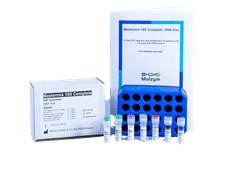Western European in vitro diagnostics market sustained by new technologies
Market earns $12.65 billion in 2014
Advertisement
Despite issues such as rising R&D costs, poor reimbursement and a decline in prices, the emergence of new technologies is boosting the Western European in vitro diagnostics (IVD) markets. While the introduction of automation and integrated platforms has spurred mature segments such as clinical chemistry and immunoassay, new segments such as molecular diagnostics and point-of-care testing (POCT) are driving the overall market growth.
New analysis from Frost & Sullivan, Western European IVD Market, finds that market earned revenues of over $8.54 billion in 2007 and estimates this to reach $12.65 billion in 2014.
"The ageing population has led to an increase in the incidence of diseases such as respiratory and urinary tract infections," says Frost & Sullivan Research Analyst Gayathry Ramachandran. "Together with the addition of new countries to the European Union and the implementation of diagnosis related groups (DRGs), this has increased the size of the Western European IVD market."
IVD manufacturers are being forced to invest in R&D because of these demographic changes and an increased incidence of diseases. This will be especially important due to the hike in demand for automated laboratory analysers, as laboratories are under pressure to generate timely results with fewer errors. The quicker turnaround time delivered by automation has enabled the start of immediate treatment of many conditions, thereby fuelling market growth.
"Moreover, the decrease in the labour pool and rising performance costs are pushing laboratories toward automated solutions," Ramachandran says "To remain competitive, manufacturers should continue to develop integrated platforms that can accommodate multiple reagents and detection technologies.
IVD manufacturers need to have greater clarity over market requirements to ensure better returns on investment. They should focus on obtaining a broad product portfolio, offering competitive prices and introducing new technologies to gain market share.
The launch of new markers and high sensitivity and specificity tests will also increase the uptake of IVDs. Another driver for this market will be personalised healthcare, in which patients play a major role in the diagnostic process.
"Despite market growth, increasing industry consolidation is making the market more competitive, escalating the difficulty for small participants to maintain their market shares," notes Ramachandran. "Therefore, strategic partnerships appear vital for these participants to remain active in this market."
Market participants should focus on growth sectors such as molecular assays, immunoassays, cardiac tests and blood glucose measurements to succeed. Germany, Italy, Spain, France and the United Kingdom accounted for more than 80 per cent of sales in the IVD market in 2006.



























































